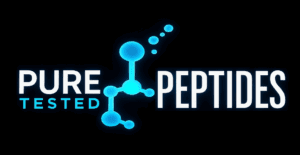Ipamorelin: Mechanism, Selectivity, and How It Differs from GHRH Mechanisms
This article explains the science behind ipamorelin—a selective growth-hormone secretagogue (ghrelin receptor agonist)—and contrasts it with GHRH (growth-hormone-releasing hormone) signaling. It is research-focused only: no treatment recommendations, no usage regimens, and no uses outside physician-directed care.
Ipamorelin is a synthetic pentapeptide designed to selectively stimulate growth hormone (GH) release by binding the growth hormone secretagogue receptor (GHS-R1a), also known as the ghrelin receptor, on pituitary and hypothalamic cells. Peer-reviewed pharmacology has highlighted ipamorelin’s GH selectivity relative to earlier GHS compounds in preclinical models.
Ipamorelin Mechanism: GHS-R1a (Ghrelin Receptor)–Centered
- Primary target: Ipamorelin binds GHS-R1a, a class-A GPCR distinct from the GHRH receptor.
- Signaling: Activation of GHS-R1a triggers intracellular cascades (e.g., increases in intracellular Ca2+ and other second messengers) that culminate in pituitary GH secretion.
- Selectivity profile in research: Early work emphasized that ipamorelin preferentially stimulates GH with comparatively minimal acute effects on other pituitary hormones under studied conditions (contrast with some earlier GHRPs).
How GHRH Mechanisms Differ (GHRH-R → cAMP/PKA)
GHRH acts at the GHRH receptor (GHRH-R) on somatotrophs—a class-B GPCR that couples primarily to Gs/cAMP/PKA signaling. This pathway drives GH gene transcription and exocytosis through cAMP-responsive transcriptional programs (e.g., PKA→CREB) and complementary cascades. Functionally, both ipamorelin and GHRH increase GH, but they engage different receptors and intracellular signaling routes.
Ipamorelin vs GHRH: Pathway Comparison
| Dimension | Ipamorelin | GHRH |
|---|---|---|
| Primary receptor | GHS-R1a (ghrelin receptor; class-A GPCR) | GHRH-R (class-B GPCR) |
| Canonical signaling | GHS-R–linked pathways (↑ intracellular Ca2+ & other second messengers) → GH secretion | Gs → adenylyl cyclase → cAMP/PKA → CREB/Pit-1 transcriptional programs → GH synthesis & release |
| Functional note in research | Selective GH secretagogue profile highlighted in preclinical work | Physiologic hypothalamic hormone for somatotroph activation |
| Conceptual complementarity | Because receptors and second-messenger systems differ, GHS-R and GHRH-R inputs can be viewed as complementary nodes within the GH axis in experimental settings. | |
Research-Grade Availability: Ipamorelin 5 mg & 10 mg
For laboratories evaluating ipamorelin in appropriate research settings, Pure Tested Peptides provides ipamorelin 5 mg and ipamorelin 10 mg vial sizes. This mention describes packaging only—no dosing or usage recommendations are provided here.
SEO Note: “GLP-1 Agonist” vs Ipamorelin
GLP-1 agonistIncretin vs ghrelin
Readers sometimes search “GLP-1 agonist” when exploring peptide categories. For clarity: ipamorelin is not a GLP-1 agonist. It targets the ghrelin receptor (GHS-R1a) to increase GH release, whereas GLP-1 agonists activate the GLP-1 receptor in the incretin pathway. This article focuses strictly on ipamorelin and GHRH mechanisms.
References (1–2 Peer-Reviewed Links)
- Raun K. et al., 1998 — “Ipamorelin, the first selective growth hormone secretagogue.” (Endocrine/Endocrinol. Pharmacol. paper; preclinical selectivity & receptor context)
- Mayo K.E. et al., 2000 — “Regulation of the pituitary somatotroph cell by GHRH and its receptor.” (Mechanistic review of GHRH-R → cAMP/PKA signaling)
